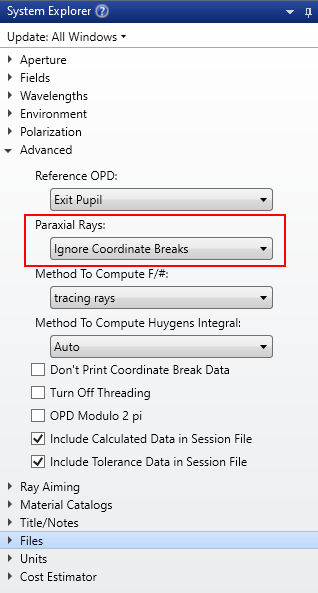Hello,
I have a question regarding skew gaussian beam propagation mode:
A simple astigmatic gaussian beam can be described by two separate caustic hyperbolas.
These two hyperbolas belong to two perpendicular planes (e.g. xz-plane and yz-plane, z:propagation direction).
The x and y-axis are parallel to the principal axes of the elliptical intensity profile of this beam.
Now let’s assume that we have a spherical convex mirror. The simple astigmatic beam hits this mirror in an arbitrary point on the spherical curved surface. Now let’s assume that the coordinate system of the beam (defined by the principal axis of its elliptical intensity profile) is not parallel to the sagittal and the tangential plane of this reflection scenario.
Which physical model does Zemax use to simulate such a scenario?
How can I get the information about the orientation of the new principal axis coordinate system of the intensity profile after reflection? I did not find any formulas in the help manual…
Does the physical model Zemax uses allow to calculate the beam parameters for the scenario I described? From my understanding in the example I described the simple astigmatism changes into a so called general astigmatism. For such a beam the principal axis coordinate system continously rotates when propagating in z-direction.
Can you help to bring some light into the darkness?
Thanks in advance and kind regards
Dirk











